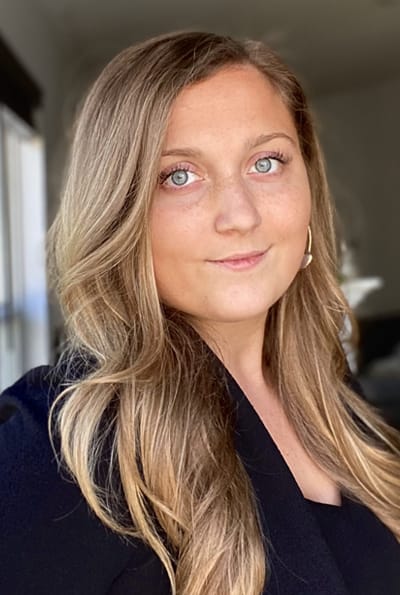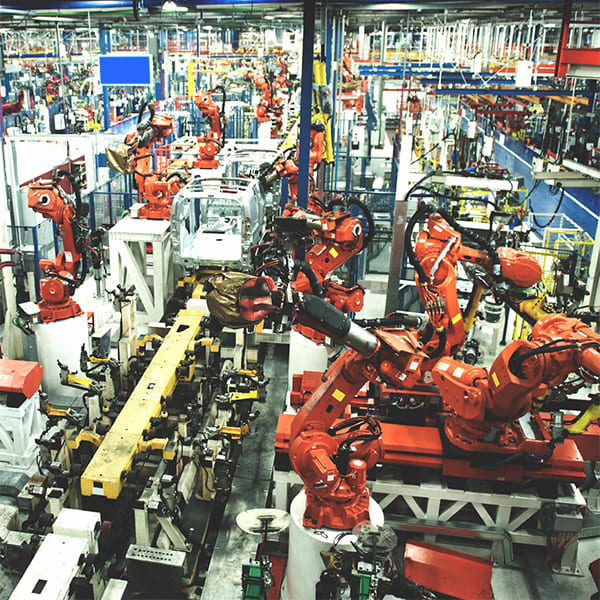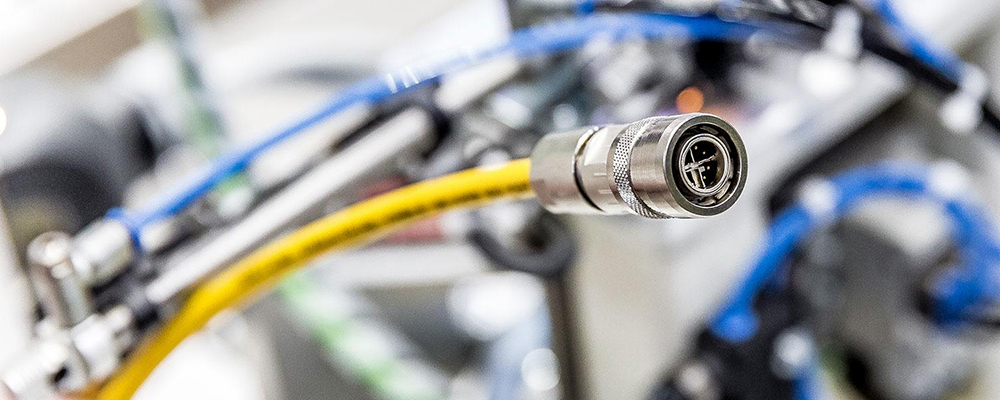
Goda Inokaityte
Senior Product Specialist at HARTING
RS’s “Ask The Expert” series taps into the experience and expertise of key thought leaders and subject matter experts from the more than 500 global suppliers we work closely with to bring customers solutions for their most challenging problems (and the daily ones, too).
We are spotlighting some of the remarkable women in tech who have worked to become respected authorities in their industries. Today, we talk with Goda Inokaityte, Senior Product Specialist at RS supplier HARTING, who provides astute insights into the world of connectors, as well as analysis of recent industry trends that have influenced the needs of their customers and their own product designs.
Tell us a little about yourself, your expertise, and the journey that led to your position at HARTING.
I’ll start with my education background. I went to Northern Illinois University where I studied electrical engineering. Knowing how everything worked was always a big interest of mine, and I just naturally was drawn to the field — I always felt that electronic applications we surround ourselves with lay the foundations of our society. My last year I was lucky enough to get an internship at HARTING, which lasted over the summer as well as through the school year on a part-time basis. After I graduated I had the opportunity to become full time as a field application engineer (FAE), which was great because pre-COVID it gave me the opportunity to travel to meet customers and see the applications for different projects first hand. The rest, as they say, is history!
HARTING’s legacy dates all the way back to the introduction of the first industrial rectangular conductor in the 1950s. How has your company and its offerings evolved over years to meet the needs of modern manufacturers?
Since HARTING first introduced the rectangular conductor in the 1950s, obviously the technologies we offer have greatly expanded. At the time, the rectangular connector addressed a massive market need as an alternative to the larger military-style connectors, and HARTING has continually worked to address these needs as the markets create them. With the boom in automation, for example, HARTING added board-level solutions, as well as smaller interface connectors to its portfolio. To this day, we are still developing new technologies to not just meet but anticipate the needs of the evolving technology landscape.
The manufacturing sector as a whole has seen a variety of challenges the last couple of years, most notably the disruptions caused by the COVID-19 pandemic. From your perspective, what would you say are the greatest challenges facing the modern engineer?
The pandemic has brought challenges, certainly, but many of the challenges I see go beyond that. For example, while engineers would typically have a lot of face-to-face meetings with suppliers or even go on-site to have a better understanding of an application, the pandemic has obviously prevented these interactions. This is a hindrance, but with the industry trending toward digitization anyway, many companies were fairly well-prepared for this — at least in terms of having a sufficient digital infrastructure and resources.
From my perspective, the greatest challenge for engineers isn’t so much the lack of or quality of resources, but just knowing that the resources are there and that it’s okay to reach out to them. There are so many options, so many suppliers, so many products, so much terminology within different companies, it can be overwhelming. Many engineers, myself included, have this built-in “do it yourself” attitude that can get in the way of productivity and efficiency. It took me years to learn that there are people out there working from the supplier side that are there to help you. You don’t need to be an expert at everything; you just need to know who the expert is, how to reach them, and be willing to receive feedback from them.
With so many connectors and components at a customer’s disposal, does HARTING offer any resources to aid them in the selection process?
One of the resources that I really like is the variety of webinars and other educational content on our website that can be viewed on-demand. We did that before the pandemic, but since then these types of resources have definitely been kicked up a notch. Of course, we also have a team of FAEs locally here in the U.S. that can help build BOMs and build solutions.
I also want to highlight what we call the HARTING Han® Configurator. As I mentioned, there are tons of options, and it can be challenging putting a BOM together and making sure everything is correct. The Configurator is an online tool that allow users to input their electrical and environmental requirements, and then it immediately provides the full solution including the complete BOM, generated 3D models, and datasheets — all of which can be downloaded in a single click.
Beyond the resources on the HARTING site, RS also offers a wide array of HARTING content on their own website. This includes new product highlights, videos, brochures — you name it. We are also working on integrating that nifty Configurator onto the RS site for a seamless transaction process from selection to purchase.
One ongoing trend regarding the electrical wiring of an application is the transition from traditional hardwiring to connectorization. What are some of the pros, cons, and uses of each approach?
Traditionally, before there were a lot of connectors, most systems were hardwired together, which really just means lugging something together, or maybe screwing it down. This is pretty time-consuming, terrible for maintenance, and usually just not scalable for any applications that have a lot of wiring. The only times I would ever recommend hardwiring are when it’s part of a very simple wiring plan that will not need any maintenance or device replacements.
While the use of a connector has an initial incurred cost, most of the time it pays for itself after one maintenance cycle, or if not one certainly two cycles. Labor costs, as well as the costs of correcting wiring errors, are eliminated with the use of a connector. There are also the safety risks to consider when hardwiring, not to mention the downtime costs a machine would incur if an engineer had to hardwire everything — both which are non-factors when adopting connectors into an application.
Additionally, increased connectorization also means that the engineer tasked with maintenance does not have to be quite as specialized. It’s a lot easier to just unplug something, as opposed to going inside a panel and disconnecting each and every wire.
What would you say are some other prominent trends in the connectivity market today, and how do these trends influence the needs of customer applications?
The two major trends that I am seeing in the industry are modularization and miniaturization. First, everyone today wants their devices smaller, not to mention at an ever-lower cost. We want our phones smaller, our laptops smaller — it’s a trend that spans almost every industry. From the connector side, that means we need smaller connectors, but at the same time we also have to cater to the increased capability needs for these devices’ interfaces. We want smaller devices with more power, smaller devices with faster data transmission. A lot of the technology HARTING is developing addresses these growing market demands.

Modularization refers to how the designs of devices and machines are changing. Manufacturers want assurance that their designs are both future-proof and scalable. For example, if you have an extensive machine where something is broken, you want to be able to replace the broken item, not the whole machine. Having a connector to disconnect a smaller unit as opposed to dealing with a hardwired system makes maintenance, as well as upgrading, much easier. This is major value-add proposition for OEMs because they can assure customers that their investment meets both current and future needs. Plus, from the OEM’s side, it means they don’t have to constantly reinvent the wheel; by upgrading a current platform through modularization, engineers can spend more time addressing the problem at hand instead of building new design foundations from scratch.

What are some of the highlights of HARTING’s catalogue of offerings? What are some of their features and who might benefit most from them?
One thing that highlights HARTING’s approach addressing these trends is our investment in modular connectors. Basically, these connectors constitute a solution where the engineer has smaller building blocks of connectors with different capabilities in term of power, signal, or data processing. Engineers can pick any of these building blocks that they need to create a custom connector— a connector comprised entirely of off-the-shelf parts! We’ve had this solution for some time for our rectangular connectors, but more recently we launched a similar-themed product on the PCB side. This kind of technology is truly game-changing for the connector industry.
I would also be remiss not to mention HARTING’s focus on in-region manufacturing. We are a global technology group, but we do heavily emphasize regional capabilities. In the U.S., we have historically had a lot of value-add business by essentially adding cables and other components to other solutions, but in the past year we’ve moved a lot of component manufacturing to North America, allowing much more flexibility on our end to meet the unique regional requirements customers are looking for.
HARTING SPE Insights
HARTING Connectors vs. Hardwiring
Customer Testimonial: HARTING Connectors Reduce Downtime







